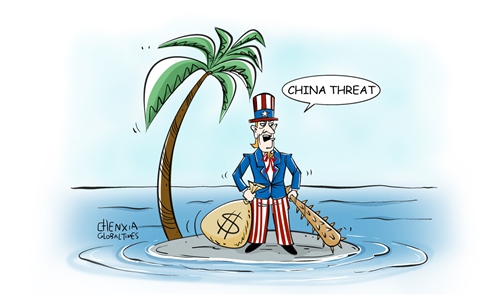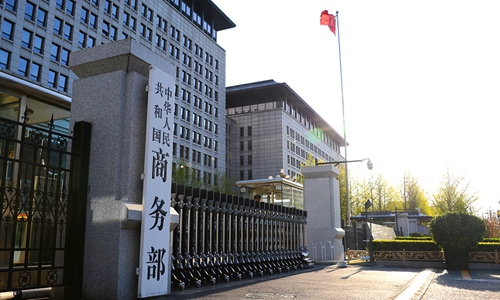
Illustration: Xia Qing/GT
The economy of the Asia-Pacific region is projected to grow 3.5 percent in 2024, then moderate to 3.1 percent growth in 2025 and further slow to 2.7 percent expansion in the medium term, according to the latest update of the Asia-Pacific Economic Cooperation (APEC) Regional Trends Analysis report.Protectionism, including tariff increases, threatens trade growth and harms economic relations among APEC members, and a renewed commitment to cooperation on trade issues is crucial to maintaining APEC's positive momentum in the face of evolving global challenges, noted Rhea C. Hernando, co-author of the report, the South China Morning Post reported on Wednesday.
It is essential for APEC to value the successful experiences of past regional economic integration and trade liberalization efforts. In light of current common challenges, if zero-sum thinking can be ruled out, there is potential to enhance the regional economic growth outlook through strengthened cooperation.
Even though protectionist trade restrictions and policy uncertainties involving certain member economies have brought pressure to the economic development of the Asia-Pacific region, data from Chinese customs provides positive signals in this context.
In the first ten months of this year, total trade between China and other APEC economies reached 21.27 trillion yuan ($2.95 trillion), accounting for 59.1 percent of China's total trade during the period and setting a new record for the same period, according to Chinese customs data.
This data not only highlights China's significant position and leading role in the regional trade landscape but also underscores the close trade ties and immense cooperation potential among the economies in the Asia-Pacific region, which injects valuable confidence into regional economies.
Since its establishment, APEC has significantly advanced regional trade cooperation by streamlining procedures and reducing trade barriers. It has fostered regional economic integration by promoting free and open trade.
The region is also strengthening industrial chain cooperation, improving logistics efficiency and enhancing regulatory alignment. These efforts have made the region one of the most dynamic and high-potential economic areas in the world.
In 2023, the total GDP of the 21 APEC economies reached $64.45 trillion, accounting for more than 60 percent of global GDP. Over the past 30 years, the average tariff level in the Asia-Pacific region has decreased from 17 percent to 5 percent. From 1989 to 2022, total trade in goods and services in the APEC region grew from $3.1 trillion to $30 trillion, with an average annual growth rate of about 7.4 percent, according to a report by the Xinhua Institute last week.
However, the Asia-Pacific region is facing unprecedented risks and challenges, necessitating further cooperation among Asia-Pacific economies. Rising restrictions are threatening trade cooperation and heightening policy uncertainty, which could worsen economic relations among APEC members.
The number of trade-restrictive and other measures rose from 276 at the end of 2019 to 345 last month, up 25 percent, according to data from the APEC Regional Trends Analysis report.
To address common risks and challenges, economies in the Asia-Pacific need to move away from zero-sum approaches and embrace the principle of mutually beneficial cooperation. By enhancing collaboration and collectively tackling difficulties, regional economies can achieve shared development and prosperity.
China champions multilateralism and free trade, actively fostering cooperation within the Asia-Pacific region. The country is a strong proponent of establishing the China-ASEAN Free Trade Area, has actively participated in initiatives such as the Regional Comprehensive Economic Partnership and proposed joint building of the Belt and Road Initiative. These efforts aimed at enhancing regional economic and trade cooperation are creating substantial opportunities and generating robust momentum for sustainable development in the region.
Hopefully, more regional economies will join hands with China to deepen economic and trade cooperation, collectively tackle challenges and achieve win-win development. By fostering collaboration, the region can create a more resilient and sustainable economic landscape.
The author is a reporter with the Global Times. bizopinion@globaltimes.com.cn



